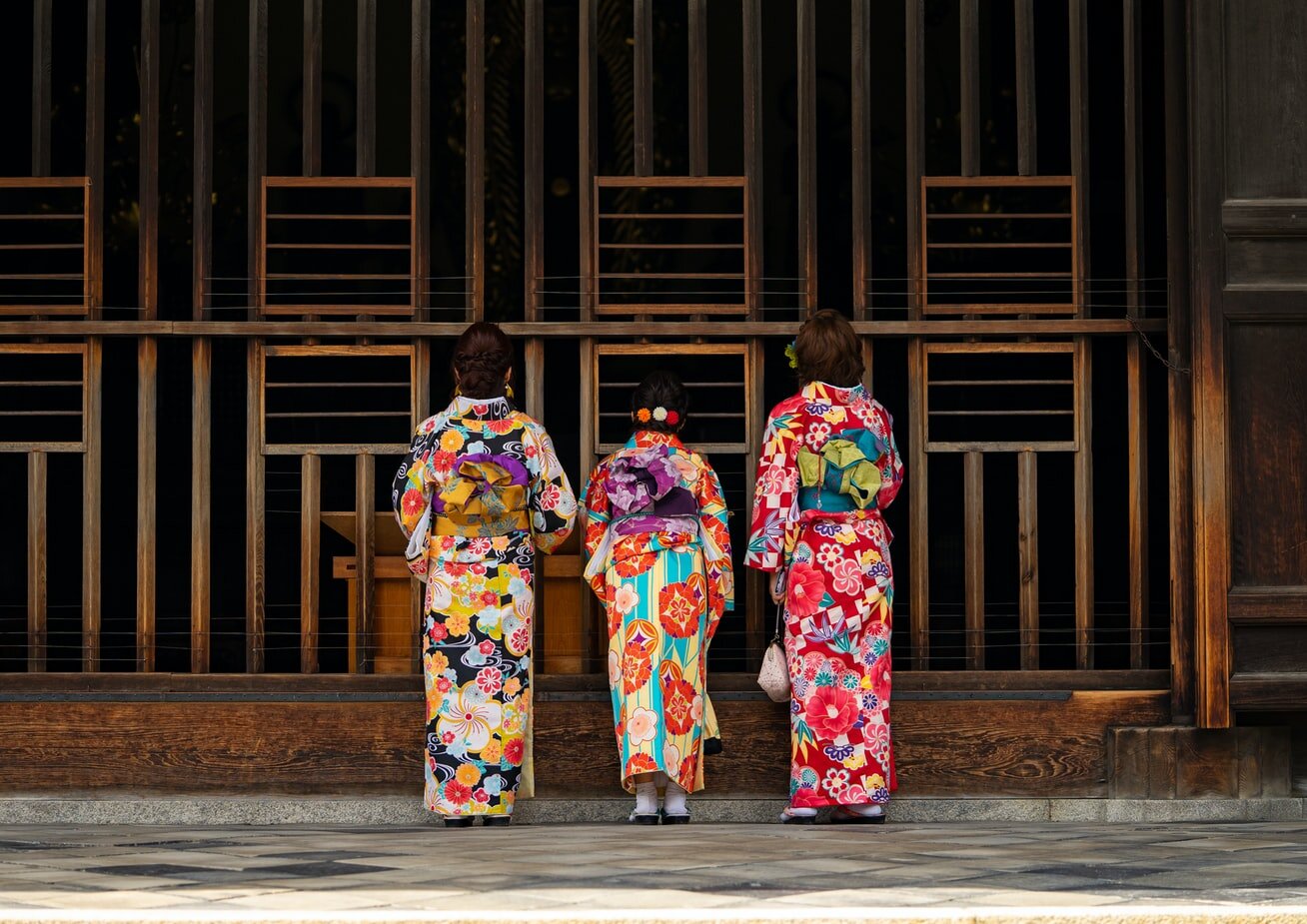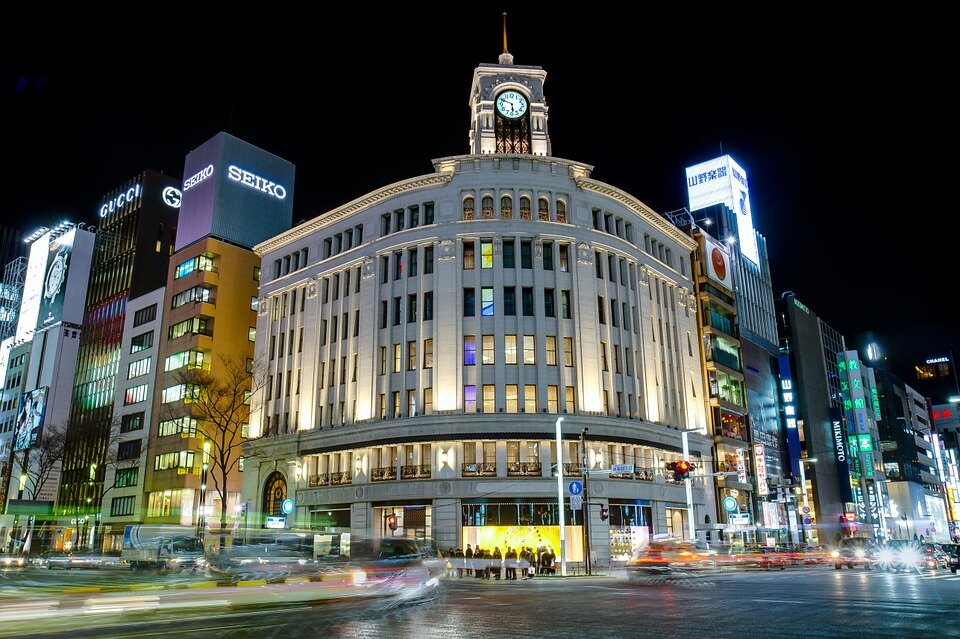The Intricate Fusion: A Glimpse Into The World Of Japanese Fashion
Japan is globally recognized as a cultural mecca, seamlessly blending traditional charm with cutting-edge technology. From its demure settings to being a tech hub, Japan captivates visitors. As one of the world's largest consumer societies, accounting for 11% of global luxury sales, Japan boasts a rich fashion history. Fashion, a crucial cultural element, reflects the evolution of social and political institutions. Japan's emphasis on image and innovation has left an indelible mark on couture style and luxury brands, influencing both global consumers and the fashion industry. Japanese fashion trends showcase a vibrant and diverse landscape, catering to both men and women with unique styles. Japanese street fashion brands lead the way, influencing global trends. For women, the scene is a blend of elegance and innovation, while men's fashion embraces contemporary flair. Japanese street fashion styles captivate with their bold expressions, setting the stage for individuality and creativity. From sleek urban looks to eclectic ensembles, Japan's fashion scene reflects a dynamic fusion of tradition and modernity, making it a global trendsetter.
Japanese Traditional fashion
Women wearing colorful kimono @Damian Hutter (Unsplash)
When people think of Japanese fashion and styles, the traditional kimono often takes center stage. Originally just a term for clothing, the kimono as we recognize it today originated in the Heian Era (794-1192). From its humble beginnings, the kimono evolved into an art form as fabrics and dyes became more accessible. Its significance grew prominently among the Japanese aristocracy, turning into a status symbol. Like other art forms, fine clothing began reflecting various aspects of Japanese culture and Japan’s cultural fashion, from the changing seasons to social stratification—a phenomenon observed globally.
Kimonos played an integral part in Japan’s traditional fashion history where they were adorned in harmony with seasonal shifts, with colors mirroring fabric and conditions. Summer kimonos, known as yukata, were crafted from lighter cotton, while winter kimonos were typically made from heavier materials like wool. Kimonos feature broad sleeves and extend gracefully from the shoulders down to the heels, creating an elegant and flowing silhouette. These graceful robes are intricately tied with a wide belt known as an obi, which not only secures the kimono but also adds a distinctive touch to the overall ensemble. The artistry involved in the design and production of kimonos reflects Japan's rich cultural heritage, and these garments are often donned during special occasions such as weddings, tea ceremonies, or traditional festivals, symbolizing both a nod to tradition and a celebration of enduring elegance.
The importance of The Kimono In japanese history
The timeless allure of the kimono transcends mere fashion; it is a cherished cultural artifact that weaves stories across generations. The remarkable durability of the kimono allows it to gracefully adapt to subtle shifts in body shapes, ensuring that its beauty endures through the ages. Beyond its aesthetic appeal, the kimono's unique feature of being able to be returned to a single piece of cloth when untied adds an extra layer of significance. This quality allows it to be not only a garment but also a canvas for creativity. Passed down from ancestors to children and grandchildren, the kimono becomes a living tapestry of familial connections and cultural heritage. The art of re-tailoring these garments resonates with a sense of continuity, as each stitch tells a story of adaptation and preservation. In this way, the kimono becomes a symbol of both personal and collective history, encapsulating the essence of Japanese tradition handed down through time.
Ginza shopping district, Tokyo @JordyMeow (Pixabay)
Modern Fusion In japanese fashion
While contemporary Japanese culture may seem influenced by modernity and Westernization, its traditional essence persists through a diverse range of seasonal clothing, blending the old with the new. Japan has exerted a profound influence on global fashion, particularly during the turn of the century when fashion underwent a transformative shift away from its restrictive past. The kimono, with its freedom of movement and simple yet elegant form, played a pivotal role in shaping new perspectives in the fashion world. In the late 19th century, the allure of Japanese kimonos and textiles captivated the interest of people in Western countries. This cultural exchange sparked a fascination with Japanese aesthetics, influencing Western designers and challenging established norms. The impact of Japan on fashion continues to resonate, as its traditional elements and innovative approaches have left an indelible mark on the ever-evolving landscape of global style. Japanese fashion trends have infiltrated high-end fashion houses worldwide, alongside renowned Japanese designers. Many runway stylists incorporate Japan's oriental flair, resulting in captivating and innovative designs. Japan is revered in the fashion realm for unveiling new designs and seasonal products, with its society leading the luxury market. Tokyo stands out as a pivotal hub for exclusive designer items, offering the rarest and most sought-after pieces.
Shibuya, a city within Tokyo, stands as an undisputed fashion icon, requiring no introduction. Widely acclaimed as one of Tokyo's most popular neighborhoods, Shibuya is renowned for its trendsetting culture and zeitgeisty fashion. This vibrant district pulsates with energy, serving as a dynamic hub where cutting-edge styles emerge and influence the broader fashion landscape. From bustling shopping streets to eclectic boutiques, Shibuya captures the essence of contemporary Japanese fashion, making it an indispensable destination for those seeking to immerse themselves in the latest trends and fashion-forward expressions.
Internationally acclaimed brands like Kenzo, Issey Miyake, and Hanae Mori exemplify Japanese elegance, enjoying widespread popularity. Hanae Mori, the sole female Japanese designer to grace the runways of Paris and New York, exclusively showcases her boutiques in Japan. A significant event for Tokyo's fashion scene is the annual Vogue Fashion Night Out, showcasing the diverse styles Japan offers as it transitions into colder seasons. Throughout the year, visiting designers host various events, while Tokyo Fashion Week, typically held in October, reigns as Japan's premier fashion festival.
Tokyo’s luxury fashion scene
Tokyo's diverse suburbs house hidden boutiques and couture fashion houses, creating a unique and unforgettable shopping experience in Japan. With Japan being a concentrated hub of luxury brands, the market caters to an exclusive clientele, prompting designers to go the extra mile for customer satisfaction. Ginza and Omotesando shopping districts stand out as luxury fashion hubs, with Ginza hosting the world's largest Chanel boutique, a grand 10-story establishment.
In Japan, historic department stores like Isetan, founded in 1886, provide customers with luxurious access to top international and Japanese brands. Highlighting the success of Japanese designers such as Jun Takahashi of Undercover, Chitose Abe of Sacai, and the iconic Rei Kawakubo from Comme des Garcons, these esteemed stores maintain a Japanese essence while showcasing products from refined international designers.
The Comme des Garcons Shinjuku flagship store, known for its excellence, rotates designs on mannequins up to three times a week, impressing clientele and reflecting seasonal changes. This serves as a valuable source for fashion enthusiasts always one step ahead in updating their seasonal wardrobes.
various fashion styles in tokyo
Japan boasts a diverse array of popular street fashions, each with its unique flair. Kawaii, known for its tenderly cute aesthetic, combines innocence with a playful spin. Lolita fashion, characterized by elaborate dresses and an abundance of laces, showcases a distinct blend of Victorian and Rococo influences. Gyaru, an ever-evolving style, embraces anything but plain, with a focus on girly-glam elements like wigs, fake lashes, and nails. Fragment Design represents a contemporary and edgy fashion scene. Harajuku stands out as the epicenter of Japanese street fashion, a vibrant hub where diverse styles collide. Shibuya, on the other hand, is a hotspot for youth fashion and trendy styles, contributing to Japan's dynamic and ever-changing street fashion landscape.
Japanese street fashion known as Gyaru, which originated in the 1970s, is a distinct style that has evolved over time. Gyaru emphasizes a girly-glam aesthetic, placing a strong focus on artificial beauty elements like wigs, fake lashes, and fake nails. It's noteworthy that Ganguro is a subcategory of Gyaru. This fashion trend is heavily influenced by Western fashion, making it a unique and dynamic expression of personal style on the streets of Japan.
The popularity of Harajuku fashion in Japan traces its roots back to the postwar Allied occupation when American soldiers and civilians resided in the area. During this time, curious Japanese youths flocked to Harajuku to experience a different culture and explore the Western goods available in local stores catering to the Americans. This cultural exchange laid the foundation for the unique and eclectic fashion scene that Harajuku is renowned for today. The district evolved into a creative hub where young individuals express their individuality through bold and innovative styles, making it a captivating and influential fashion destination in Japan.
Omotenashi in every detail
Fashion stands as one of Japan's captivating and deeply ingrained cultural legacies. Even a brief visit to Tokyo easily enthrals with its visible fashion scene. Beyond the impeccable products, the spirit of Japanese omotenashi pervades the entire experience design. Japanese luxury brands not only present exclusive styles and designs for Japan but also influence global fashion trends. If you're keen on immersing yourself in the pinnacle of elegance, Japan, with its strong focus on consumer luxury, is possibly the best destination worldwide for such an experience.
For those interested in delving deeper into the history of Japanese fashion, Professor Toby Slade from the University of Tokyo has authored a fantastic book titled "Japanese Fashion: A Cultural History.”
©http://artobserved.com/
RELATED EXPERIENCES
FASHION & ARCHITECTURE GUIDED TOUR IN TOKYO
Explore the architectural grandeur of various fashion stores in the world’s fashion capital with architecture professionals.
TRADITIONAL WEAVING AT THE HOUSE AND ATELIER OF A CRAFTSMAN
Learn traditional Japanese weaving techniques from a master craftsman in the suburbs of Tokyo.





